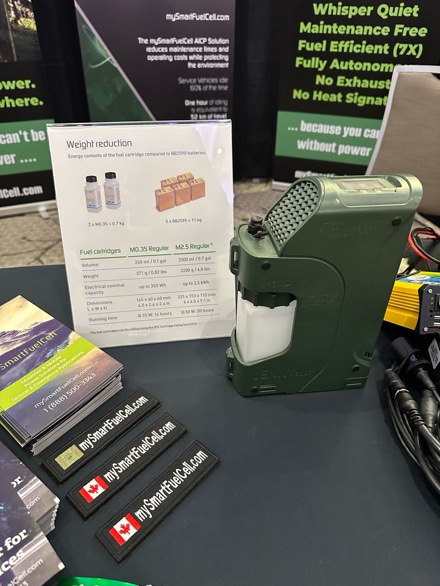
This is the methanol powered SFC JENNY 600S fuel cell. It is silent and does not emit a heat signature. This 600 Wh generator weighs 3.75 lbs and will charge batteries as well as communicate with them. Also offered in a 1200 Wh model.

This is the methanol powered SFC JENNY 600S fuel cell. It is silent and does not emit a heat signature. This 600 Wh generator weighs 3.75 lbs and will charge batteries as well as communicate with them. Also offered in a 1200 Wh model.
Hybrid Power Solutions offers battery pack systems in three sizes. Seen here is the Medium or Batt Pack Pro which offers 5,000w at 120v. The batteries of all of their systems is LiFePO4.
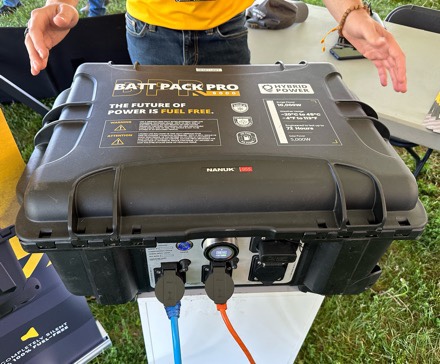
Their other two systems are the Batt Pack Energy at 3,000w and Batt Pack Jupiter at 7,000w. They can be configured for 120v or 240v service and 50Hz or 60Hz.
They can be recharged from shore power, vehicles, generators, solar panels, other batteries, etc.
This and other products shown at Rampart Range Day are available for unit and agency orders in Canada and the US through Rampart.
Freedom Atlantic’s Universal PD Cable is designed to connect your EUD to your radio and be compatible with all radio configurations, keeping your radios alive longer.
Features:
• 5, 9 and 12V power to EUD (USB Power Delivery 3.0)
• 100mA to 2A configurable current output
• Adjust charge rates real-time using PD protocol messaging
• Real time power role swapping
• Reconfigurable USB Type C interface: swap between host and
peripheral modes
• *Peripheral connector options for legacy radios: Glenair 6-pin, Fischer, ODU
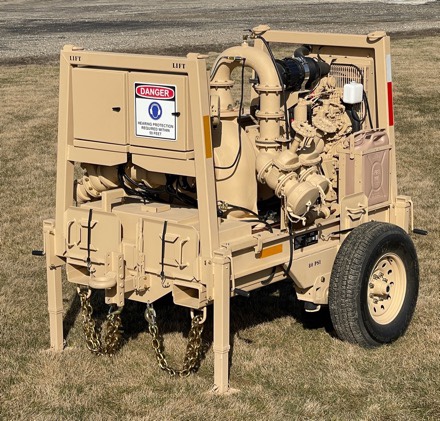
Delaware, OH (March 2, 2023)
The Defense Logistics Agency has assigned T.J. Clark International, LLC National Stock Number (NSN) 4320-01-707-6951 as the manufacturer of record for the US Army’s new 600 Gallon Per Minute (GPM) Fuel Pumping Assembly.
These 600 GPM pump systems are utilized by Combat Support elements of the US Army to distribute fuel in the forward operating battle space. The systems are designed to operate in a broad range of environmental conditions and temperature ranges from the Arctic to the desert.
T.J. Clark’s CEO, Eric Jenkusky, stated, “We are pleased that our team’s efforts to de- sign and manufacture the market leading tactical pump and distribution systems for our nation’s warfighters is being recognized by the US Department of Defense. There are three primary logistical items you need to fight. Those items are fuel, water and ammu- nition. Our systems deliver two of those to the tactical edge.”
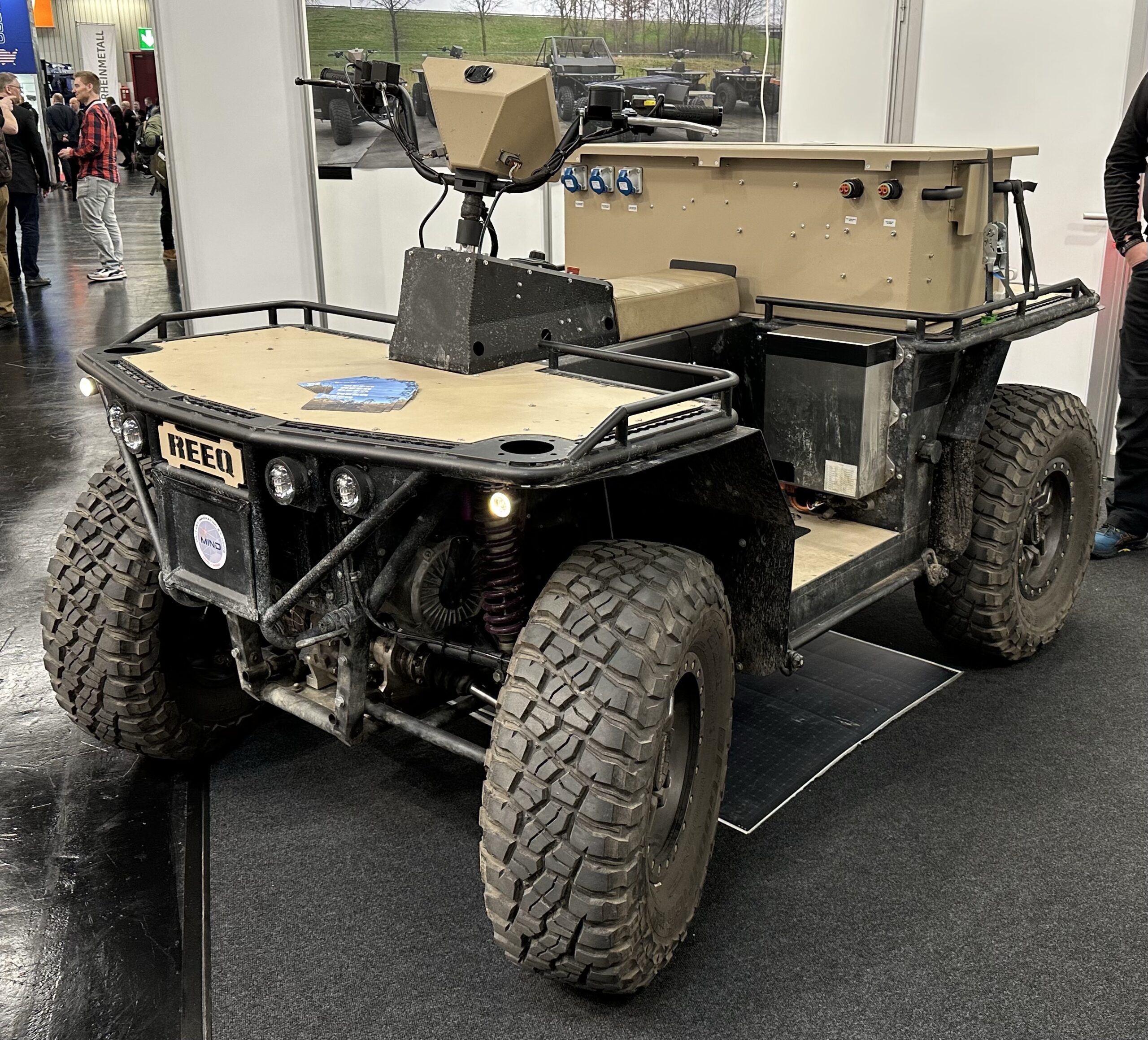
REEQ is a diesel hybrid, scalable, modular platform which can be configured in a variety of ways including Side by Side or Quad bike setup.
REEQ can be manned or unmanned, remote or autonomous.
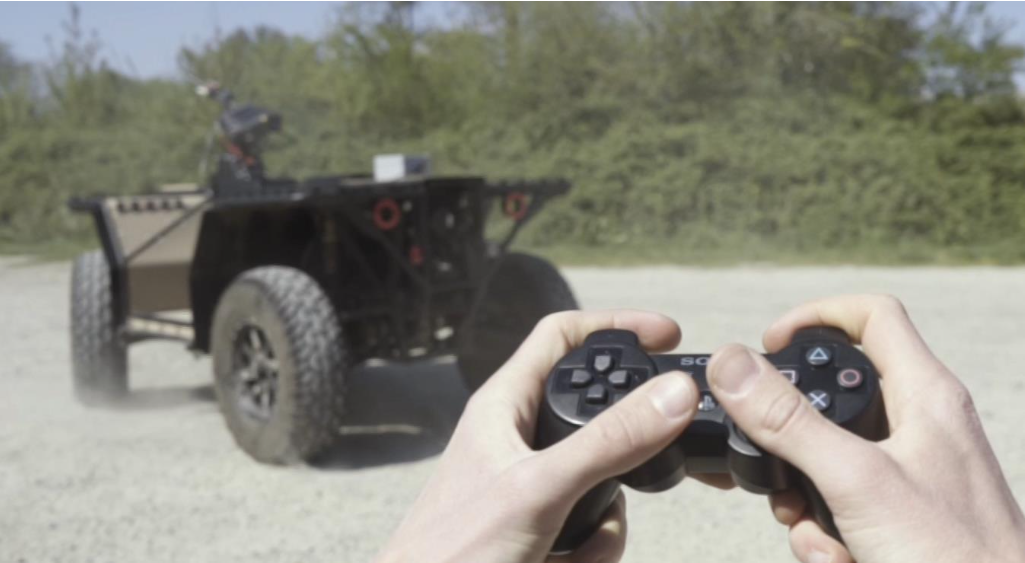
It was designed using COTS components which are easily obtainable on the market.
REEQ offers 50km range with up to 1000km using a range extender and a top speed of 85km/h.
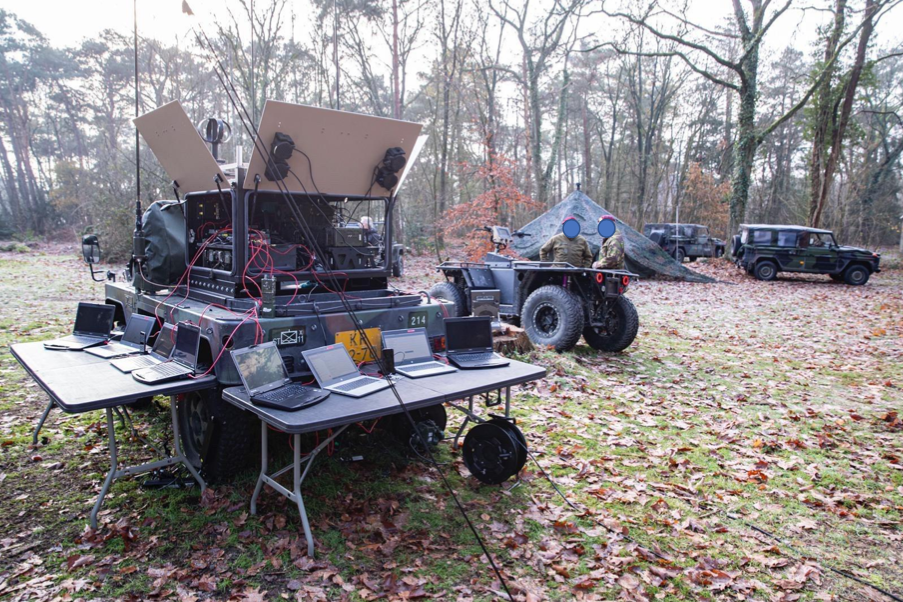
Here it is set up to run a small, mobile command post.
Justin, TX – (December 1, 2022) – Canoo (NASDAQ: GOEV), a leading high-tech advanced mobility company, has delivered its new Light Tactical Vehicle (LTV) to the United States Army for Analysis & Demonstration in fulfillment of the contract awarded in July 2022.

The LTV is engineered for extreme environments and includes stealth configurations. Designed to be durable with a focus on passenger and battery safety, the LTV incorporates carbon Kevlar for strength without the added weight. As with all Canoo vehicles, the LTV is designed for passenger ergonomics, taking body motion and height into consideration, as well as multi-tasker components.
“The LTV is another milestone proving the power of our technology and how it can be used, even in tactical situations,” said Tony Aquila, Chairman & CEO at Canoo. “This is a winning algorithm for our customers and company.”
Modular for Multiple Use Cases: Convertible Flatbed, Mounting Racks, Ramps & Tactical Systems
A jack-of-all trades, the Light Tactical Vehicle can be converted from a pickup to a flatbed truck, a cargo vehicle and more. With a convertible flatbed platform, the LTV can easily carry standard sized plywood, construction and oversized materials, as well as tactical equipment or attachments for the required mission.
Canoo’s proprietary modular attachment system and accessories quickly interchange the flatbed walls with many other types of mounts including racks, ramps, storage boxes, tents, or tactical systems. The modular upfitting enables the LTV to have mission-specific configurations at a lower total cost investment.
Enhanced Performance: Powertrain + Suspension to Get the Job Done
The LTV has a proprietary all-wheel drive system with up to 600 hp. To support the increased demands of off-road environments, the LTV incorporates air-springs, a raised suspension, and 32-inch all-terrain tires to build higher ground clearance suitable for extreme or rugged conditions.
One Platform, Many Variants
Canoo vehicles are based on the company’s proprietary multi-purpose platform which integrates all the critical components of an electric powertrain, so it is as flat and efficient as possible, while maximizing cabin and cargo space.
Full specifications will be revealed closer to production. Canoo’s line of battery electric vehicles are purpose-built to help customers be more productive and achieve a higher return on capital while reducing total cost of professional ownership.
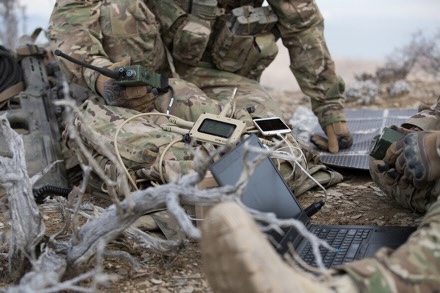
Galvion, a world leader in the design and manufacture of military power and data management solutions is pleased to announce that it has received a major order from the United States Marine Corps (USMC) for its Squad Power ManagerTM (SPM). The order, valued at USD $11 million, placed by the Power Team within Marine Corps System Command’s Logistics Combat Element Systems will supply SPMTM systems to each Marine Expeditionary Force (MEF) within the Marine Corps, including Reserve Forces. The Squad Power Manager (SPM) is a core element of Galvion’s Nerv Centr® Active Systems range, which provides scalable power and data solutions to the dismounted operator. Deliveries will start in January 2023.
Named P2S2 (Portable Power Scavenger System) by the Marine Corps, the Galvion SPM kit provides a lightweight and compact multifunctional system to enable the harvesting of energy from multiple sources. Using a selection of cables, connectors and accessories, the system provides the ability to scavenge, distribute, and manage power from multiple power sources to include solar, Alternating Current (AC), Direct Current (DC), military batteries, North Atlantic Treaty Organization (NATO) plugs, and vehicle cigarette lighter/alternator attachments. The SPM kit contains adapters to power USB-powered equipment; radios, including the AN/PRC-148, AN/PRC-152 and AN/PRC-117; the Defense Advanced GPS Receiver (DAGR); and portable computing devices and peripheral equipment. The SPM kit can scavenge power from partially discharged batteries, vehicles, and standard electrical outlets and convert that power into a usable format for powering devices and recharging batteries.
The SPM system requires no special configuration or programming, converting and managing power as efficiently as possible depending on power sources and equipment needs. This allows teams to minimize weight and logistic burden by carrying fewer batteries, while increasing operational efficiency through active monitoring and management of power usage.
Kristen Lomastro, President of Active Systems, said: “We are proud to see our SPM kits being adopted by the Marine Corps. With customized SPM kits already in use across all U.S. DoD branches, including the U.S. Army, Navy, Air Force, and SOCOM, this compact, intelligent power manager continues to deliver meaningful capability improvements that reduce the physical, cognitive and logistical burden on our warfighters. By providing the very best technical and engineering solutions possible, we help to increase their agility, lethality and survivability, and continue in our mission to protect and support those who protect us.”